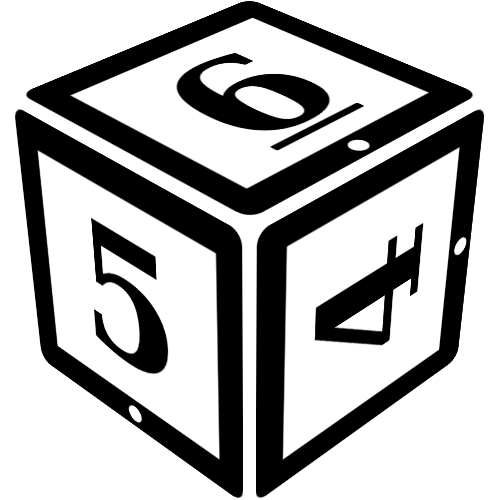Table of Contents
Loosely based on Magic Item Signature Traits (Dungeon Master's Guide II, p229) - OLD
A signature trait is a minor effect that changes the item's appearance in some way. For example, a weapon could be wreathed in a cool mist, a shield might be ringed with tiny skulls, or a cloak might seem to swallow up the light shining upon it. Such traits provide no mechanical effect or benefit---they simply make the items seem special and unique.
Signature traits vary widely. Since no single character can master more than a handful of them, these traits can be used to identify a particular item's creator.
Learning a Signature Trait
Each time a character selects an item creation feat, he can select a signature trait (see #Signature Trait Descriptions). For example, a cleric who selects Craft Wondrous Item at 3rd level might choose fashionable, religious or shadowy.
A character can choose the same trait multiple times. For example, if the cleric described above chose Craft Wand at 6th level, he could select the same signature trait that he chose at 3rd level, or he could choose a different trait. Typically, a character who routinely creates items limits himself to a small number of signature traits (or even just one) since his creations are associated so closely with him that they become part of his own identity.
Applying Signature Traits
Adding a signature trait has no effect on the cost to create, time to create, or market price of the item to which it is applied. It changes only the appearance of the item, not its function.
A character making a magic item can apply a number of signature traits chosen from all traits known to him. Every combination of traits is possible as long as the result is reasonable. For example, a Belt of Giant Strength isn't a weapon, so applying the sparking trait to it would serve no purpose.
A character can apply at most one signature trait for every seven caster levels or part thereof. For example, if the cleric described above makes a wand at 8th level, he can apply both his chosen signature traits to the wand, or he could pick just one trait.
If a character is upgrading an item, the signature traits already applied to the item count against the limit. A character can still upgrade an item with more traits then he could apply, he just can't apply his own traits. For example, if the cleric from described above is granted the honour of upgrading a very powerfull armor and the armor already has three traits, he will not be able to apply his own traits but he can still upgrade the armor.
Identifying Signature Traits
By definition, every signature trait gives items made with it a certain identifiable characteristic. Anyone who examines such an item should be able to determine which signature trait it possesses just by the way it looks or feels. If any doubt remains a DC 10 Spellcraft check identifies a signature trait.
Furthermore, signature traits provide bonuses on other checks. Any character who makes a successful skill check or bardic knowledge check to learn about the origin, history, or powers of an item with a signature trait gains a +2 circumstance bonus on the check if he knows which trait it has.
Limitations of Signature Traits
Because signature traits are very minor magical effects it is not possible to apply them to very large magical items. For example, a signature trait could not be applied to a magical building or magically enchanted ship.
It is possible to apply signature traits to constructs, but on a limited scale. This mostly means that constructs of small size or larger aren't completely covered by the signature trait. Instead the trait concentrates on a part of the constructs body, multiple traits concentrate in the same place. For example, a mage creating an Iron Golem could could apply the Smoky trait and the Multicolored trait and concentrate both on the eyes of the golem.
Signature Trait Descriptions
The following lists are known signature traits. It is fully possible to propose new traits; but remember that a trait does not provide any mechanical bonus.
Generieke Traits
- Barbed: Het item heeft ruwe haken of punten.
- Bitter: Een item dat deze trait heeft smaakt, ruikt, en ziet er gewoon vies en onsmakelijk uit.
- Bleeding: Een item met de bleeding trait scheidt een kleine hoeveelheid bloed af zolang het wordt vastgehouden.
- Brilliant: Het item flits kort met een helder licht elke keer dat het wordt geactiveerd. De maker bepaalt de kleur van het licht bij het kiezen van de trait.
- Clean: Een item met deze trait wordt nooit vies of verkleurd.
- Comfortable: Het item is rustgevend en ontspannend om aan te hebben of vast te houden.
- Crude: Een crude item lijkt gemaakt te zijn van alleen de basismaterialen, en het ambachtswerk lijkt afgeraffeld.
- Dreadful: Dreadful items dragen angstwekkende emblemen zoals schedels of grijzende gezichten. Deze emblemen lijken te bewegen als het item geactiveerd wordt. De maker bepaalt de exacte beelden bij het kiezen van de trait.
- Fashionable: Een item met deze trait is aantrekkelijker om naar te kijken dan normale items van dit type.
- Flickering: Een item met de flickering trait wordt omgeven door zeer doorzichtige dansende zwarte vlammen.
- Gaudy: Een gaudy item is voorzien van heldere opvallende kleuren of handen vol nepdiamanten. Het item kan zelfs een zeer zwakke regenboog uistralen bij activatie.
- Glowing: Dit item geeft evenveel licht als een kaars zodra het geactiveerd wordt, het licht blijft een ronde.
- Heavy: Een item met de heavy trait voelt ongewoon zwaar, ondanks dat het echte gewicht niet veranderd is.
- Loud: Zodra een loud item geactiveerd wordt laat het een hard en ongerelateerd geluid horen. Bijvoorbeeld een brullende leeuw, een sterk muzikaal akkoord of een korte uitroep.
- Multicolored: Het item veranderd op random tijden van kleurenschema.
- Shadowy: Een shadowy is pikzwart van kleur en lijkt alle kleur die erop valt op te drinken.
- Shrouded: Een shrouded item is voortdurend gehuld in een aura van dunne mist.
- Sizzling: Als een sizzling item vlees rijkt is er een zacht, brandend gesis te horen.
- Slimy: Een slimy item zit ten alle tijden onder een dunne laag slijm. De maker kan bij het kiezen van deze trait de kleur, textuur en temperatuur van het slijm bepalen.
- Smoky: Dit item laat een spoor van bijna onzichtbare rook na.
- Sparking: Een sparking item vonkt telkens dat het iets raakt of geraakt wordt.
- Warped: Een warped item ziet eruit als het gemaakt is op een rare manier, en heeft hoeken en vormen die niet overeenkomen met bekende constructiemethoden.
- Writhing: Een writhing item gaat telkens als het geactiveerd wordt kort tekeer als een vastgehouden slang.
Religieuze Traits
- Religious: Een religious item draagt het symbool van een bepaald geloof. De maker kiest bij het nemen van deze trait de exacte details.
Totemic Traits
- Totemic: Een item met de totemic trait is gedecoreerd met markering, inkepingen of beelden die het als aanduiden als heilig voor een bepaalde stam of groep individuen. De maker bepaalt de exacte details als hij deze trait kiest.

